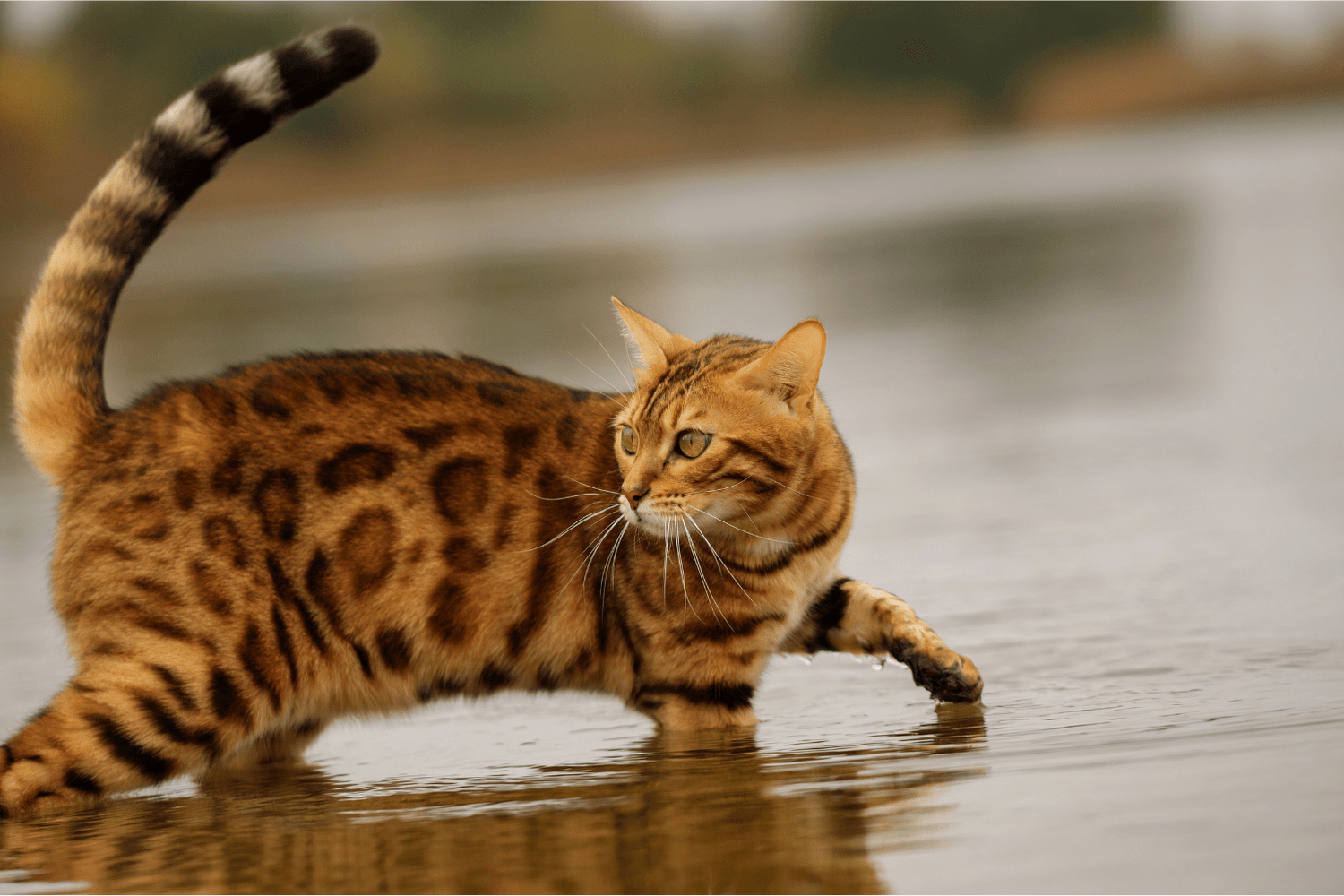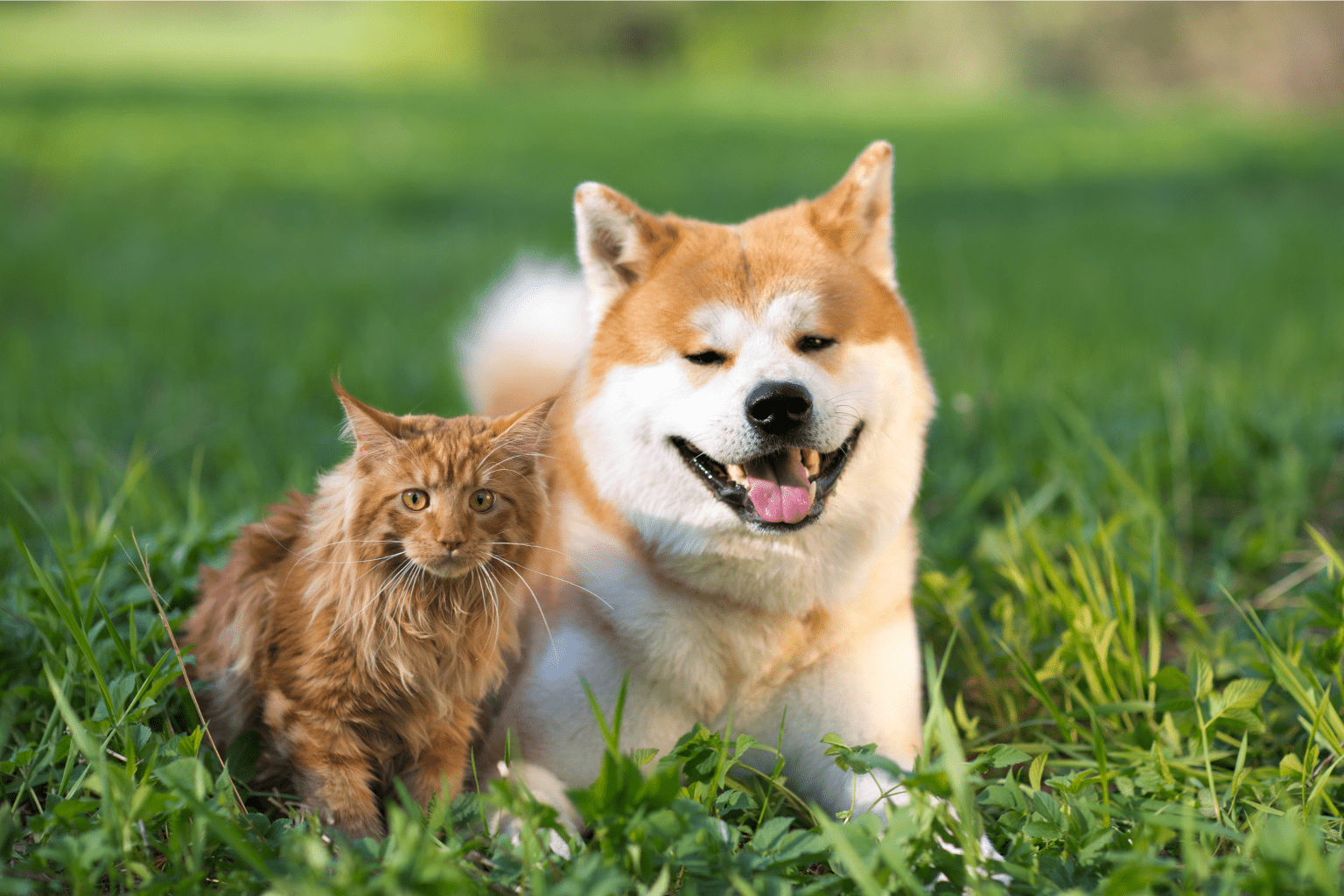Key Takeaways
- Cats have inherent hunting instincts inherited from their wild ancestors.
- Understanding cats as prey animals helps improve how we care for them.
- Recognizing these natural behaviors is essential to meeting a cat's needs.
Table of Contents
- What Does 'Prey Animal' Really Mean for Cats?
- The Cat Hunting Sequence: From Stalk to Strike
- Cats as Predators: The Wildlife Reality Check
- When Cats Become the Hunted: Understanding Feline Vulnerability
- Managing Multi-Pet Homes: When Instincts Collide
- Breed, Age, and Neutering: How They Affect Prey Drive
- Enrichment for Indoor Cats: Satisfying Prey Drive Without the Wild
- Problem & Solution: Troubleshooting Prey-Drive Puzzles
- Supporting Cats Through Stress and Anxiety Naturally
- Choosing the Right Approach for Your Cat's Needs
- Long-Term Success: Building a Balanced Life
What Does 'Prey Animal' Really Mean for Cats?
When we talk about cats prey animals, we're diving into the heart of what makes your feline tick. Your sweet house cat carries the same hardwired hunting instincts as their wild cousins, and understanding this dual nature changes everything about how we care for them.
Prey drive isn't about hunger; it's pure instinct. Even the most pampered indoor cat will stalk, pounce, and deliver that final "kill bite" to a toy mouse. This behavior stems from cats being obligate carnivores, meaning their bodies are designed to hunt and consume meat, not just nibble kibble from a bowl.
If your cat's natural instincts are causing stress or behavioral issues, consider supporting their emotional balance with the Pet Relax Cat Calming Anxiety Relief. For cats who also struggle with allergies or immune challenges, the Cat Allergy Relief & Immune Support can help address both physical and emotional wellbeing.
Why This Matters for Your Cat's Wellbeing
Unlike dogs, who've adapted significantly through domestication, cats remain remarkably close to their wild ancestors. This means your tabby experiences genuine satisfaction from completing the hunting sequence: staring, stalking, pouncing, and capturing. When these instincts go unmet, cats often develop behavioral issues like aggression, excessive vocalization, or destructive scratching.
Key Insight: Studies show that even well-fed domestic cats will hunt wildlife, not from hunger, but from an irrepressible drive to practice survival skills. This is why interactive play is essential, not optional.
The Cat Hunting Sequence: From Stalk to Strike

Every cat follows the same predictable hunting pattern, whether they're stalking a real mouse or your favorite feather wand. Understanding these steps helps you provide better enrichment and recognize normal feline behavior.
The hunting sequence unfolds in four distinct phases: the intense stare that locks onto movement, the slow-motion stalk with belly low to the ground, the explosive pounce with perfect timing, and finally the neck bite that would dispatch live prey. Each step serves a specific purpose in successful hunting.
For a deeper dive into why cats love certain behaviors, you might enjoy reading why cats love boxes and how this ties into their natural instincts.
How to Safely Channel These Instincts at Home
The key to satisfying your cat's prey drive lies in mimicking these natural behaviors through interactive play. Use wand toys that dart and pause like real prey, allow the "prey" to escape sometimes to maintain engagement, and always end play sessions with a small treat to simulate the reward of a successful hunt.
Timing matters too. Cats are naturally most active during dawn and dusk, their ancestral hunting hours. Schedule 10-15 minute play sessions during these times for maximum engagement and to help regulate your cat's sleep cycle.
Cats as Predators: The Wildlife Reality Check
Your cat's hunting prowess extends far beyond cute living room antics. Outdoor cats, even well-fed ones, significantly impact local ecosystems by hunting billions of wild animals annually in the U.S. alone.
Research reveals that cats prey on at least 2,084 species globally, with 16.5% of those species facing conservation concerns. Areas with high outdoor cat populations show up to 50% fewer birds, demonstrating the real-world consequences of unleashed feline hunting instincts.
For more on the ecological impact of feline hunting, see this recent scientific study on cats as predators.
Protecting Wildlife While Honoring Cat Nature
The solution isn't suppressing your cat's instincts, it's redirecting them. Indoor cats live longer, healthier lives while protecting local wildlife. For cats who crave outdoor time, supervised access through catios, harnesses, or enclosed runs provides safe compromise.
Belled collars prove largely ineffective, as cats quickly learn to hunt silently despite the warning. The most impactful choice remains keeping cats indoors and providing rich environmental enrichment to satisfy their predatory needs safely.
When Cats Become the Hunted: Understanding Feline Vulnerability
While we often focus on cats as hunters, they also face real predation risks. Coyotes, large birds of prey, and even loose dogs can threaten outdoor cats, especially smaller or elderly felines.
This vulnerability explains many feline behaviors that puzzle pet parents. Your cat's tendency to hide in boxes, seek high perches, or startle at sudden noises reflects deeply ingrained survival instincts designed to avoid becoming someone else's prey.
Creating Safety for Anxious Cats
Understanding your cat's prey animal status helps you create a more secure environment. Provide multiple escape routes, high hiding spots, and quiet spaces where your cat can retreat when feeling threatened. This isn't coddling, it's honoring their natural need for security.
Fearful cats benefit from gradual exposure to new experiences rather than forced interactions. Let them approach new people, sounds, or situations at their own pace, and never corner a frightened cat who needs space to feel safe.
Managing Multi-Pet Homes: When Instincts Collide

Living with cats and small pets like rabbits, birds, or hamsters requires careful management of predatory instincts that don't disappear just because you love both species equally.
The reality is stark: even the gentlest cat may suddenly act on instinct around small, quick-moving housemates. Successful multi-species homes rely on physical separation, supervised interactions, and providing cats with appropriate outlets for their hunting drive.
Building Peaceful Multi-Pet Relationships
Start introductions slowly, using scent swapping before any visual contact. Create vertical territory for cats and secure, elevated spaces for small pets. Never leave cats unsupervised around small prey animals, regardless of how well they seem to get along. Consider feeding puzzle toys to redirect your cat's hunting energy toward appropriate outlets rather than housemates.
Multi-species households work best when each animal has their own safe space to retreat. Baby gates can create visual barriers while allowing airflow, and pheromone diffusers may help reduce stress for all pets during the adjustment period.
Breed, Age, and Neutering: How They Affect Prey Drive
Not all cats prey animals with the same intensity. Several biological and environmental factors influence how strongly your cat expresses hunting behaviors, and understanding these differences helps you tailor enrichment and management strategies.
Certain breeds like Abyssinians, Bengals, and Siamese cats typically display more intense prey drive due to their closer genetic ties to wild ancestors. These breeds often require more interactive play and mental stimulation to stay content indoors. In contrast, breeds like Persians and Ragdolls tend to have gentler, less driven personalities.
| Factor | Higher Prey Drive | Lower Prey Drive | Management Strategy |
|---|---|---|---|
| Breed Type | Oriental breeds, working cats | Persian types, lap cats | Match activity level to breed needs |
| Age | Kittens, young adults (1-5 years) | Senior cats (8+ years) | Adjust play intensity accordingly |
| Neutering Status | Intact cats | Spayed/neutered cats | Spay/neuter reduces roaming urges |
| Environment | Outdoor access, rural settings | Indoor-only, urban apartments | Provide appropriate enrichment |
Age plays a significant role in hunting behavior intensity. Kittens and young adult cats typically show peak prey drive, while senior cats often prefer gentler activities. Neutering generally reduces territorial and roaming behaviors but doesn't eliminate the hunting instinct entirely.
Enrichment for Indoor Cats: Satisfying Prey Drive Without the Wild
Indoor cats live longer, healthier lives while protecting local wildlife, but they need purposeful enrichment to channel their natural cats prey animals instincts. The key is creating opportunities for the complete hunting sequence: stalking, chasing, catching, and "consuming."
Interactive wand toys that mimic bird or mouse movements trigger the strongest responses. Move the toy erratically, let it "escape" behind furniture, and always end sessions with a small treat to complete the hunting cycle. Puzzle feeders transform mealtime into hunting practice, making cats work for their food just like they would in nature.
Vertical space is crucial for indoor hunting simulation. Cat trees, wall shelves, and window perches create three-dimensional hunting grounds where cats can survey territory and practice pouncing from different heights. Rotate toys weekly to maintain novelty and prevent boredom.
Simple DIY enrichment can be highly effective. Cardboard boxes with holes cut for hide-and-seek, paper bags for stalking practice, and treats hidden around the house for scavenger hunts all engage natural hunting behaviors. The goal is variety and unpredictability to keep your cat's mind sharp and instincts satisfied.
Problem & Solution: Troubleshooting Prey-Drive Puzzles

Cat Brings Dead Animals Home
This behavior stems from your cat's natural instinct to share successful hunts with their family group. The most effective solution is keeping cats indoors or providing supervised outdoor time in enclosed spaces. Punishment never works and can damage your relationship with your cat.
Increase indoor enrichment to satisfy hunting urges safely. Multiple daily play sessions with interactive toys can significantly reduce the desire to hunt live prey when outdoor access is limited.
Cat Is Too Rough During Play
Overstimulation during play often results from cats prey animals instincts being triggered too intensely. Use wand toys to maintain distance between your hands and your cat's claws. If your cat becomes too aggressive, immediately stop play and ignore them for a few minutes.
Never use hands or feet as toys, as this teaches cats that human body parts are appropriate prey. Redirect rough play toward appropriate toys and reward gentle behavior with treats and praise.
Cat Shows Signs of Boredom or Frustration
Excessive vocalization, destructive behavior, or aggression toward other pets often indicates insufficient mental stimulation. Increase play frequency and variety, trying different toy types, textures, and movement patterns to discover what triggers your cat's interest.
Consider environmental modifications like bird feeders outside windows for "cat TV," or puzzle toys that dispense treats throughout the day. Some cats benefit from a compatible feline companion to engage in social play and mutual grooming.
Supporting Cats Through Stress and Anxiety Naturally
When cats prey animals instincts become overwhelming or when cats themselves feel like prey due to environmental stressors, natural support can help restore balance.
Stress from unmet prey drive needs or feeling vulnerable as potential prey can manifest as destructive behavior, excessive vocalization, or withdrawal. Natural remedies work gently with your cat's system to restore emotional balance without the harsh side effects often seen with pharmaceutical interventions.
Signs Your Cat Needs Stress Support
- Excessive hunting behavior: Bringing home multiple prey daily or obsessive toy stalking
- Prey anxiety: Hiding, startling easily, or refusing to venture into open spaces
- Redirected aggression: Attacking family members when hunting instincts are frustrated
- Overgrooming or appetite changes: Physical manifestations of emotional imbalance
Pet Relax Cat Calming Anxiety Relief - Natural Emotional Balance
Best for: Cats experiencing stress from unmet hunting needs or environmental fears
Our Pet Relax Cat Calming Anxiety Relief supports the emotional balance that can be disrupted when cats prey animals instincts are suppressed or when cats feel threatened in their environment. The gentle pellet formula works with your cat's natural healing mechanisms to promote a calm disposition without sedation.
This remedy particularly helps cats transitioning from outdoor to indoor life, where hunting opportunities are suddenly limited. Pet parents report seeing more balanced behavior within days, cats engage appropriately with toys rather than obsessively hunting, and fearful cats begin exploring their territory again.
The pellets dissolve easily in food or can be given directly, making dosing stress-free even for anxious cats who resist handling.
If your cat is also experiencing joint discomfort that limits their ability to play and hunt, the Cat Hip and Joint Pain Relief can help support mobility and comfort.
Environmental Support Strategies
Natural remedies work best when combined with environmental modifications that honor your cat's dual nature as both predator and prey species.
Vertical territory satisfies both hunting and safety needs, cats can survey their domain from high perches while feeling secure from ground-level threats. Install cat trees near windows where your cat can safely observe outdoor prey movement.
Hiding spots at ground level provide essential retreat options when cats feel vulnerable. Cardboard boxes, covered beds, and furniture arrangements that create cozy nooks help anxious cats feel protected.
Scent management plays a crucial role since cats prey animals through scent tracking. Use synthetic feline facial pheromones in areas where your cat spends time, and avoid strong cleaning products that can overwhelm sensitive noses.
For more information on understanding the hunting behaviour of cats, visit this comprehensive resource from International Cat Care.
Choosing the Right Approach for Your Cat's Needs
Every cat expresses their predator and prey instincts differently based on breed, age, and individual personality. Understanding your specific cat's needs ensures you provide the most effective support.
| Cat Type | Primary Challenge | Best Natural Support | Environmental Priority |
|---|---|---|---|
| High-drive hunter (Bengal, Abyssinian) | Frustrated hunting instincts | Pet Relax + intensive play | Multiple interactive toys, puzzle feeders |
| Anxious/fearful cat | Feeling like prey | Pet Relax + safe spaces | Vertical hideouts, quiet zones |
| Senior cat | Reduced hunting ability | Joint support + gentle stimulation | Low-impact toys, accessible perches |
| Multi-pet household | Competing predator instincts | Pet Relax + behavior management | Separate resources, supervised interactions |
When to Start Natural Support
The earlier you address imbalanced prey drive behaviors, the more effective natural remedies become. Don't wait until destructive patterns are deeply established.
Immediate intervention works best for cats showing new stress behaviors after environmental changes, moving homes, new pets, or transitioning from outdoor access. Natural remedies can help support cats experiencing temporary stress before it becomes chronic anxiety.
Gradual support benefits cats with long-standing behavioral issues. Consistent use of natural remedies over several weeks allows your cat's system to rebalance slowly and sustainably.
Monitor your cat's response weekly rather than daily, natural healing follows a gentler timeline than pharmaceutical interventions, but the results tend to be more stable and long-lasting.
If you have a multi-cat household or want to support your cat's overall health, explore the Cat Health Product Bundles for comprehensive solutions.
For additional insights on how cats can provide emotional support, see can cats be service or emotional support animals.
Long-Term Success: Building a Balanced Life

Successfully managing cats prey animals instincts isn't about suppression, it's about providing appropriate outlets and natural support that honor your cat's essential nature while keeping everyone safe.
Creating Sustainable Enrichment
Avoid enrichment burnout by rotating activities and toys systematically. Keep three sets of toys in rotation, one available, one stored, and one being cleaned or repaired. This maintains novelty without constant purchasing.
Weekly rotation schedule: Monday brings out feather wands, Wednesday introduces puzzle feeders, Friday features electronic toys. This pattern prevents habituation while ensuring consistent stimulation.
Seasonal adjustments keep enrichment fresh, window bird feeders provide more action during migration seasons, while indoor obstacle courses work better during harsh weather when outdoor observation is limited.
For cats with skin sensitivities or allergies that may affect their comfort and play, the Cat Itchy Skin Relief & Hair Loss Treatment can help support healthy skin and coat, allowing for more enjoyable enrichment activities.
If your cat is recovering from surgery or injury, check out these hip and joint surgery after care tips for dogs and cats to ensure a safe and comfortable recovery.
Not a substitute for professional veterinary advice.
Frequently Asked Questions
What does it mean that cats are prey animals, and how does this affect their behavior?
Cats being prey animals means they carry deep-rooted hunting instincts inherited from their wild ancestors. This shapes behaviors like stalking, pouncing, and chasing, which are natural expressions of their survival skills and need for mental and physical engagement.
How can I effectively satisfy my cat's natural hunting instincts indoors?
You can satisfy your cat’s hunting instincts indoors by offering interactive toys, puzzle feeders, and engaging play sessions that mimic the hunt. These activities help channel their prey drive in a safe, stimulating way that supports emotional balance and reduces stress.
Why do cats continue to hunt even when they are well-fed and have no need for food?
Cats hunt not out of hunger but because their prey drive is an instinctual behavior tied to survival skills. Even well-fed cats find satisfaction in the stalking and pouncing sequence, which keeps their minds sharp and bodies active.
How do factors like breed, age, and neutering influence a cat's prey drive?
Breed, age, and neutering can all affect a cat’s prey drive by influencing energy levels and hormonal motivation. Younger cats and certain breeds may show stronger hunting behaviors, while neutering often reduces but doesn’t eliminate the instinct to chase and play.



